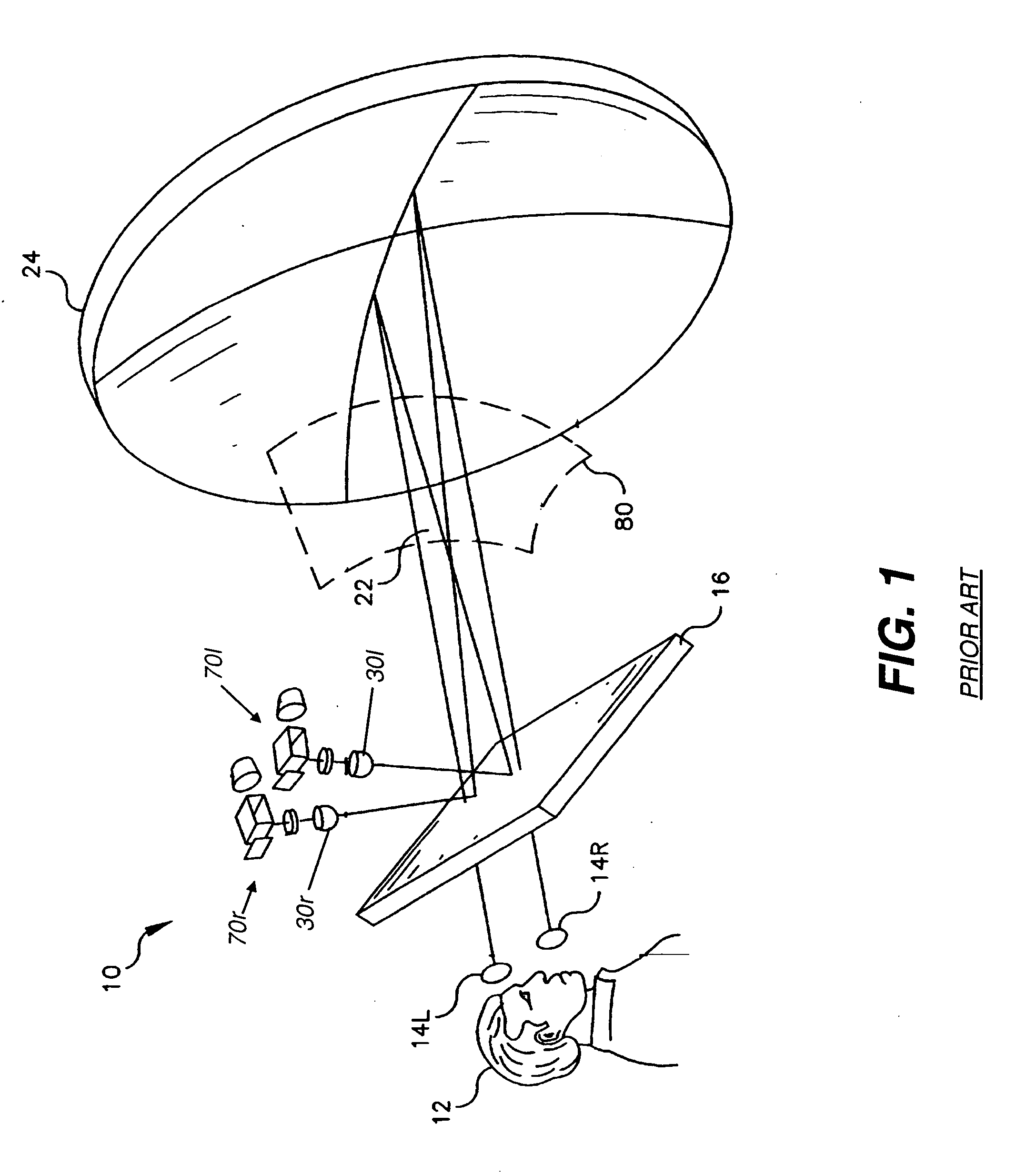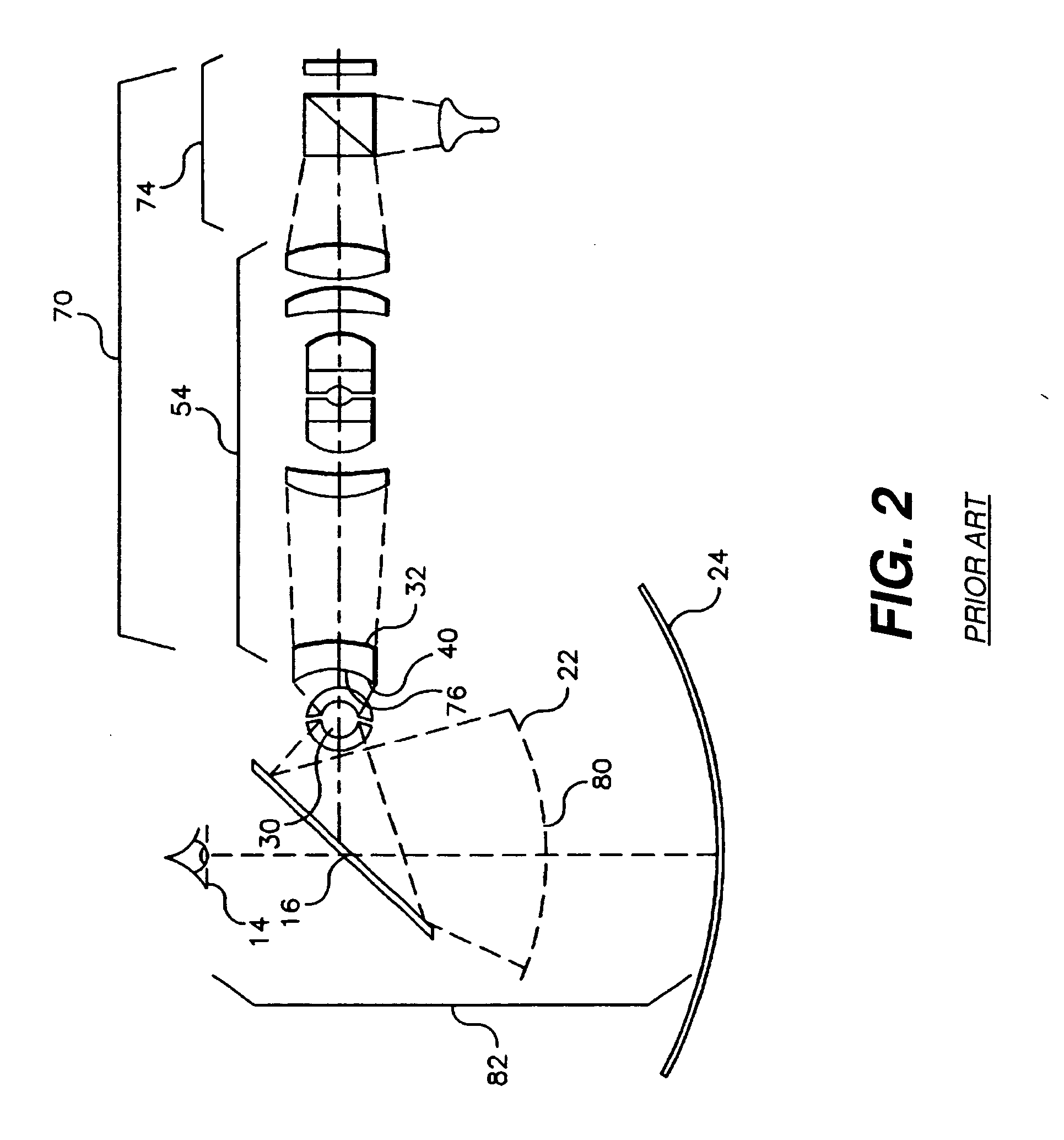Autostereoscopic display apparatus
a display apparatus and autostereoscopic technology, applied in the field of display apparatuses, can solve the problems of reducing the display brightness, reducing the display quality, so as to improve the display brightness, eliminate aberrations, and improve the display
- Summary
- Abstract
- Description
- Claims
- Application Information
AI Technical Summary
Benefits of technology
Problems solved by technology
Method used
Image
Examples
system embodiment
[0078] In order to better understand the operation and advantages of the present invention, it is useful to consider how optical assembly 110 is used in an autostereoscopic system. Referring to the single-mirror embodiment of FIG. 8, curved mirror 24 is slightly off center from both left exit pupil Pl and right exit pupil Pr. This off-center condition causes keystone distortion in the left virtual image and an opposing keystone distortion in the right virtual image. This distortion can be corrected by electronically pre-distorting the image data provided to left image source and to the right image source 100r, using image data manipulation techniques that are well known in the digital imaging art. Referring now to FIG. 4, there is shown an alternate embodiment that minimizes keystone distortion in the virtual images formed, since each exit pupil is on axis relative to its own curved mirror. In autostereoscopic display apparatus 10 of FIG. 4, left and right optical assemblies 110l an...
PUM
 Login to View More
Login to View More Abstract
Description
Claims
Application Information
 Login to View More
Login to View More - R&D
- Intellectual Property
- Life Sciences
- Materials
- Tech Scout
- Unparalleled Data Quality
- Higher Quality Content
- 60% Fewer Hallucinations
Browse by: Latest US Patents, China's latest patents, Technical Efficacy Thesaurus, Application Domain, Technology Topic, Popular Technical Reports.
© 2025 PatSnap. All rights reserved.Legal|Privacy policy|Modern Slavery Act Transparency Statement|Sitemap|About US| Contact US: help@patsnap.com



